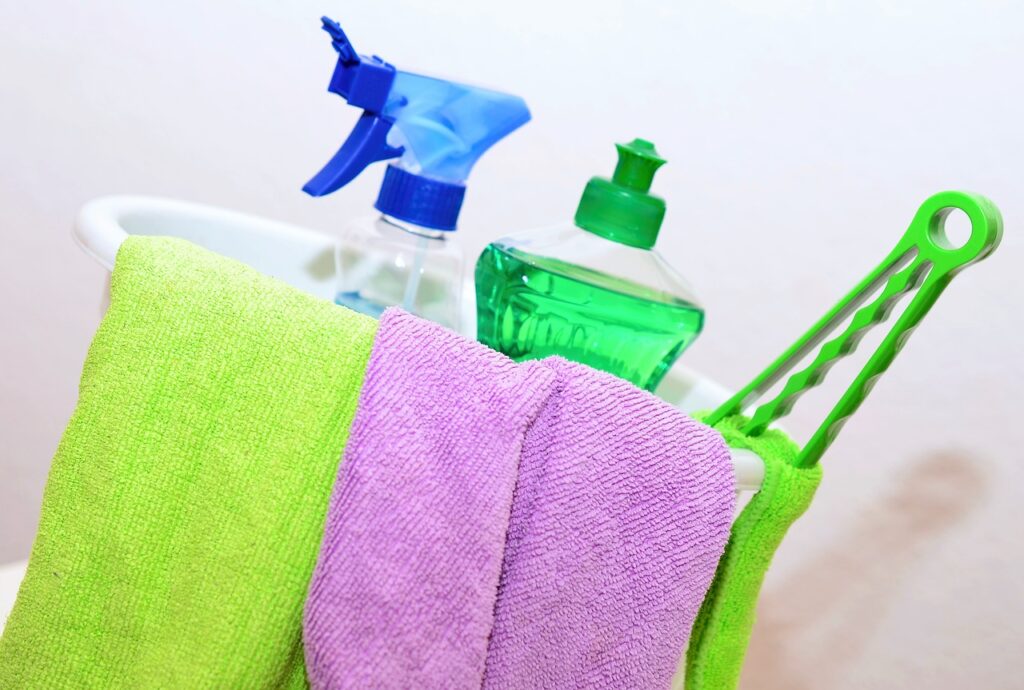Spring is here—the season of fresh starts, open windows, and the unmistakable urge to clean everything in sight. But before you get too caught up in scrubbing baseboards or reorganizing the garage, take a moment to add one crucial task to your spring-cleaning checklist: inspecting your home for signs of water damage and mold.
These silent invaders can cause serious issues if left unchecked, not to mention expensive repairs. Here’s how to spot trouble early and keep your home healthy and safe.
1. Start with the Usual Suspects: Kitchens & Bathrooms
Moisture-prone areas like kitchens, bathrooms, and laundry rooms are prime spots for mold growth and water damage.
- Check under sinks for signs of leaks, soft wood, or moldy smells.
- Inspect tile grout and caulking around tubs and showers. Cracks can let water seep behind walls.
- Look behind appliances like washing machines, dishwashers, and refrigerators.
2. Inspect Walls and Ceilings for Discoloration or Bubbling Paint
Water damage often shows up as:
- Yellow or brown stains
- Peeling or bubbling paint
- Warped drywall
- A musty or damp smell in certain areas
Be sure to look high and low, especially in corners and near windows.
3. Check Your Basement or Crawl Space
Basements are notorious for dampness. While you’re down there:
- Look for white powdery residue on walls (a sign of water seepage called efflorescence).
- Sniff for musty odors.
- Run your hand along the floor and lower walls to check for dampness.
If you have a sump pump, test it to make sure it’s working properly.
4. Don’t Forget the Attic
Even a small roof leak can lead to major damage over time. In your attic:
- Look for water stains or damp insulation.
- Check for mold around roof beams or ventilation areas.
- Make sure vents are clear and functioning.
- Move items away from the walls to inspect for mold.
5. Inspect Windows & Doors
Winter weather can break down seals and cause leaks:
- Look for soft or warped wood around frames.
- Examine caulking for cracks or gaps.
- Check if condensation regularly forms between window panes—it could be a sign of a failing seal.
6. Outside: Your Home’s First Line of Defense
Walk the perimeter of your home and look for:
- Clogged gutters or downspouts—they can cause water to pool near the foundation.
- Cracks in the foundation or siding.
- Roof shingles that are curling, cracked, or missing.
What If You Find Mold?
If the affected area is under 10 square feet, you might be able to clean it yourself with detergent and water or a commercial mold cleaner. Always wear gloves and a mask. For larger or recurring issues, call Restore It —you may have a hidden moisture problem.
Prevention Tips
- Use dehumidifiers in damp spaces.
- Fix leaks immediately.
- Ensure proper ventilation in kitchens, bathrooms, and attics.
- Keep gutters clean and direct water away from your foundation.
Final Thoughts Spring cleaning is the perfect time to give your home a once-over, not just for aesthetics, but for health and safety. Catching water damage or mold early can save you from costly repairs and protect your home’s air quality. Plus, peace of mind is just one more reason to open the windows and breathe in that fresh spring air. Restore It is here to help you have a clean and safe home for your family

